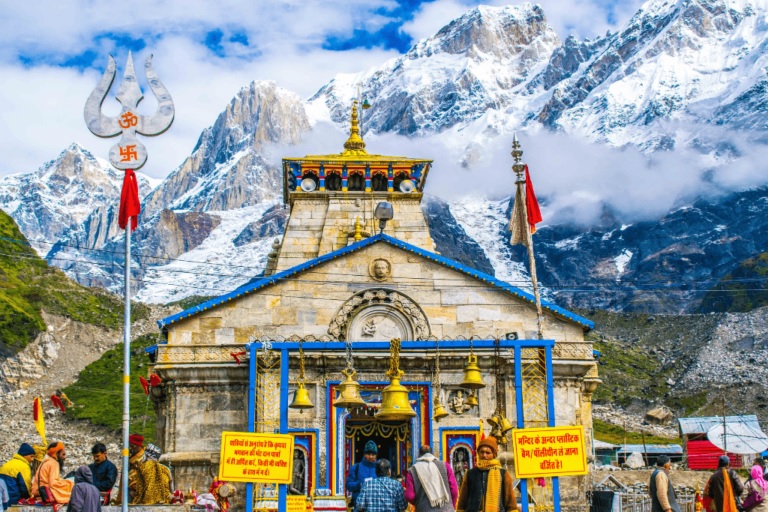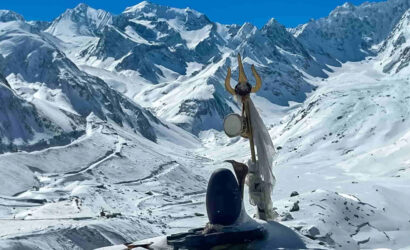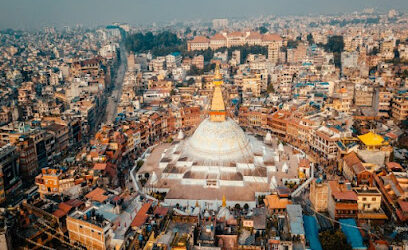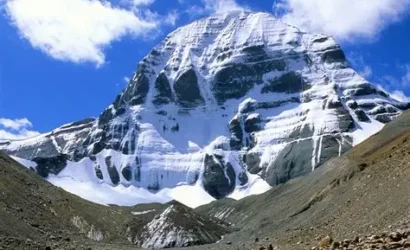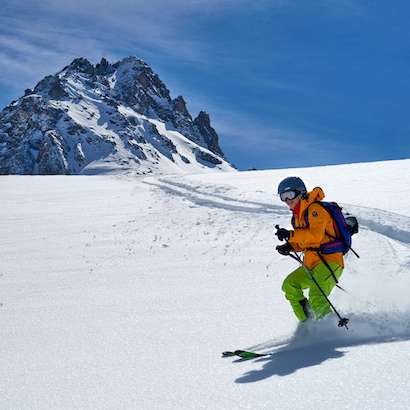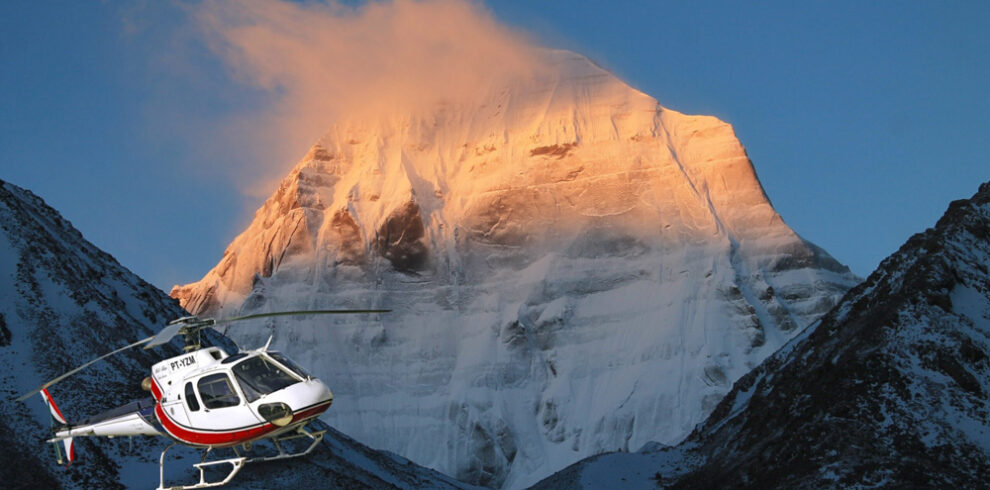10days 9 Night Char Dham Yatra in Uttarakhand India Himalayas Dev Bhoomi
-
Bus, Airlines, Car
-
3 Stars Hotels , Home Stay
-
5,416 metres
-
Delhi
-
Feb, Mar, Apr & May , June , July Sept , Oct
-
Eco-Tour, Hiking
-
All meals during the trek
-
English, Hindi , Pahadi
-
Easy to Moderate
-
4-20
-
10
-
70
Overview
Char Dham Yatra in Uttarakhand India Himalayas Dev Bhoomi
Char Dham Yatra – Uttarakhand is a state which has been depicted in the Purans by names like Dev bhoomi (LAND OF GODS), punyabhoomi, rishiyon se youktbhoomi(land full of sages).
A state in where many gods and goddesses reside, a state where mother Ganga moves ahead purifying everyone with her holy water,
“One such holy place in -Uttarakhand” where is situated – 5 badri, 5 Kedar, 5 priyag.
Yamunotri, Gangotri, Kedarnath and Badrinath are the four pilgrimage sites located in Indian Himalayas away from pollution in soothing climate and invigorating greenery at different districts “Uttarakhand”.
These 4 holy places known as “char Dham” where ‘char’ means- four and dham refers to ‘religious destination’ and their journey is known as “Tirthyatra” (pilgrimage), where thousands of devotees not only India but also from abroad comes to visit.
Highlights
- Yamunotri: Located at an altitude of 3293 meters above sea level, Yamunotri temple is dedicated to the goddess Yamuna. The highlight of the temple is the hot water springs called “Janki Chatti” and “Surya Kund,” which are believed to have medicinal properties.
- Gangotri: Located at an altitude of 3100 meters above sea level, Gangotri temple is dedicated to the goddess Ganga. The highlight of the temple is the Gangotri Glacier, which is the source of the river Ganga.
- Travel through the Sherpa villages of Namche, Khumjung, Khunde, and Dingboche
- Kedarnath: Located at an altitude of 3583 meters above sea level, Kedarnath temple is dedicated to Lord Shiva. The highlight of the temple is its stunning location amidst the Himalayan range and the trek that leads to the temple.
- Badrinath: Located at an altitude of 3133 meters above sea level, Badrinath temple is dedicated to Lord Vishnu. The highlight of the temple is the natural hot water springs called “Tapt Kund” and the beautiful scenery surrounding the temple.
Itinerary
Overall, the Char Dham Yatra is a spiritually uplifting and physically challenging pilgrimage that attracts devotees from all over India and the world. It is a journey that combines natural beauty, adventure, and devotion.
Haridwar is a holy city in the Indian state of Uttarakhand, situated on the banks of the river Ganges. It is a popular destination for pilgrims and tourists alike, and there are several places to visit and things to see in and around the city.
Here are some of the popular tourist attractions that you can see on a drive from Haridwar to JankiChatti:
Chandi Devi Temple: Located atop the Neel Parvat hill, the Chandi Devi Temple is a popular pilgrimage site and offers a panoramic view of the city.
Mansa Devi Temple: Dedicated to Goddess Mansa Devi, this temple is located on top of the BilwaParvat hill, and can be reached by a ropeway ride.DaksheswaraMahadev Temple: This ancient temple is dedicated to Lord Shiva and is believed to be one of the oldest temples in the city.
Har Ki Pauri: This is a famous ghat on the banks of the Ganges, and is considered to be one of the most sacred places in Haridwar. It is also a popular spot for the evening Ganga Aarti ceremony.
JankiChatti: JankiChatti is a small town located at an altitude of 2,650 meters, and is the starting point for the trek to Yamunotri, one of the Char Dham shrines.
Yamunotri: The Yamunotri temple is located at an altitude of 3,293 meters and is dedicated to Goddess Yamuna. It is one of the four shrines that make up the Char DhamYatra.
Kempty Falls: Located near Mussoorie, the Kempty Falls is a popular tourist spot and is known for its beautiful cascading waterfall.
These are just a few of the popular attractions that you can see on a drive from Haridwar to JankiChatti. There are several other places to visit and things to do, depending on your interests and preferences.
after 1 hour you will come across a check post Naitwar, reaching the Himari camp site
The distance from JankiChatti to Yamunotri is approximately 6 kilometers, and the trek takes around 3-4 hours to complete, depending on one’s pace and fitness level. The trek to Yamunotri is considered to be a moderate-level trek, and it involves a gradual ascent through the beautiful Himalayan landscapes.
Here are some of the highlights of the trek:
Scenic beauty: The trek to Yamunotri takes you through beautiful Himalayan landscapes, including lush green forests, cascading waterfalls, and snow-capped peaks.
Hot springs: On the way to Yamunotri, you will come across the Kharsali hot springs, which are believed to have medicinal properties and are considered to be holy by the locals.
Yamunotri temple: The Yamunotri temple is the main attraction of the trek, and it is located at an altitude of 3,293 meters. It is believed to be the source of the Yamuna river, and is dedicated to Goddess Yamuna.
DivyaShila: Located near the Yamunotri temple, the DivyaShila is a rock pillar that is believed to be the seat of Lord Shiva. It is considered to be a sacred site by the pilgrims.
he route from JankiChatti to Gangotri passes through some beautiful and significant places. Here are some of the important points that you can visit on the way from JankiChatti to Gangotri:
BhairavGhati: BhairavGhati is a narrow gorge on the way to Gangotri. It is believed to be the abode of Lord Bhairav, who is considered to be a fierce form of Lord Shiva.
Mukhba Village: Mukhba Village is located on the banks of the Bhagirathi River. The village is known for its beautiful apple orchards and traditional wooden houses.
Harsil: Harsil is a picturesque village situated on the banks of the Bhagirathi River. It is surrounded by snow-capped mountains and is famous for its apple orchards and natural beauty.
Gangnani: Gangnani is a hot water spring located on the way to Gangotri. It is believed to have medicinal properties and is a popular spot for pilgrims to take a dip.
Gangotri Temple: The Gangotri Temple is one of the holiest shrines for Hindus. It is dedicated to Goddess Ganga and is situated at an altitude of 3,042 meters above sea level.
Gaumukh: Gaumukh is the source of the River Ganga and is located about 18 kilometers from Gangotri. It is a popular trekking destination and offers spectacular views of the surrounding mountains.
These are some of the important points that you can visit on the way from JankiChatti to Gangotri. You can also enjoy the beautiful landscapes, rivers, and mountains that you will come across during the journey.
The road from Gangotri to Uttarkashi is a scenic route that passes through several picturesque locations and important landmarks.
Here are some of the key points that you can visit on this route:
Harsil: Harsil is a charming hamlet located on the banks of the Bhagirathi River. It is known for its apple orchards, dense forests, and breathtaking views of the Himalayan peaks.
Dharali: Dharali is a small village located near Harsil. It is famous for its natural beauty and traditional wooden houses.
Gangnani: Gangnani is a hot water spring that is believed to have medicinal properties. It is a popular spot for pilgrims to take a dip.
Uttarkashi: Uttarkashi is a town situated on the banks of the Bhagirathi River. It is a significant pilgrimage site and is known for its ancient temples and ashrams.
KashiVishwanath Temple: The KashiVishwanath Temple is one of the most famous temples in Uttarkashi. It is dedicated to Lord Shiva and is known for its unique architecture and intricate carvings.
Nehru Institute of Mountaineering: The Nehru Institute of Mountaineering is located in Uttarkashi and is a renowned training center for mountaineers. It offers various courses on mountaineering, rock climbing, and skiing.
These are some of the key points that you can visit on the road journey from Gangotri to Uttarkashi. You can also enjoy the scenic beauty of the Himalayan ranges, rivers, and valleys that you will come across during the journey.
To reach Kedarnath via Uttarkashi and Guptkashi, you can follow the following route:
Uttarkashi to Guptkashi: Uttarkashi to Guptkashi is a distance of approximately 190 km, and it takes around 7-8 hours by road.
You can hire a taxi or take a bus from Uttarkashi to Guptkashi. The route passes through some beautiful towns and villages such as Srinagar, Rudraprayag, and Agastyamuni.
Guptkashi to Kedarnath: After reaching Guptkashi, you can take a shared jeep or hire a taxi to reach Gaurikund, which is the starting point of the Kedarnath trek. The distance between Guptkashi and Gaurikund is approximately 32 km, and it takes around 1-2 hours by road.
On the way from Uttarkashi to Guptkashi, you can visit some beautiful places such as:
Kashi Vishwanath Temple in Uttarkashi
Tehri Dam
Chamba town
Devprayag, the confluence of Alaknanda and Bhagirathi rivers
On the way from Guptkashi to Gaurikund, you can visit:
Triyuginarayan Temple
Sonprayag, the confluence of Son Ganga and Mandakini rivers
Phata, the helipad point for Kedarnath
These places are not only scenic but also have significant mythological and religious importance. You can also enjoy the beautiful landscapes, rivers, and mountains that you will come across during the journey.
Today reach Kedarnath from Guptkashi, you can follow the below route:
Guptkashi to Gaurikund: The first step is to reach Gaurikund, which is the starting point of the Kedarnath trek. Gaurikund is located around 32 km from Guptkashi. You can take a shared jeep or hire a taxi to reach Gaurikund. The road journey takes around 1-2 hours, depending on the traffic and weather conditions.
Gaurikund to Kedarnath: After reaching Gaurikund, you need to trek 14 km to reach Kedarnath. The trek is moderately difficult and takes around 6-7 hours. You can also hire a pony or a palanquin to reach Kedarnath if you are unable to trek.
On the way from Guptkashi to Gaurikund, you can visit some of the following places:
Triyuginarayan Temple: This ancient temple is believed to be the place where Lord Shiva and Goddess Parvati got married. The temple is located around 40 km from Guptkashi and is a popular pilgrimage site.
Sonprayag: This is the confluence of the Son Ganga and Mandakini rivers. It is located around 5 km from Gaurikund and is a scenic spot.
Phata: This is a helipad point for Kedarnath. You can take a helicopter ride from Phata to Kedarnath if you do not wish to trek.
on the way from Gaurikund to Kedarnath, you can visit some of the following places:
Bhairavnath Temple: This temple is located around 4 km from Gaurikund and is dedicated to Bhairavnath, a fierce form of Lord Shiva.
Gandhi Sarovar: This is a beautiful lake located at an altitude of 4,000 meters. It is named after Mahatma Gandhi and is a popular spot for trekking and camping.
Kedarnath Temple: This is the main pilgrimage site and is one of the four sacred shrines of the Char DhamYatra. The temple is dedicated to Lord Shiva and is believed to have been built by the Pandavas during the Mahabharata era.
These places not only offer a scenic view of the Himalayas but also have significant mythological and religious importance. You can also enjoy the natural beauty of the rivers, mountains, and landscapes that you will come across during the journey.
After visiting Kedarnath, on the way back to Guptkashi, you can visit some of the following places: follow to same way kedarnath to guptkashi
These places offer a scenic view of the Himalayas and have significant mythological and religious importance. You can also enjoy the natural beauty of the forests, meadows, and landscapes that you will come across during the journey.
To reach Badrinath from Guptkashi, you can either take a shared taxi or a private taxi. The distance between Guptkashi and Badrinath is around 190 km and it takes around 7-8 hours to cover the distance by road.
On the way to Badrinath, you can visit some of the following places:
Joshimath: It is a popular hill station located around 45 km from Badrinath. It is home to the famous Shankaracharya Math and is also the winter seat of Lord Badri.
Auli: It is a popular skiing destination located around 55 km from Badrinath. It is surrounded by snow-capped mountains and offers stunning views of the Himalayas.
Today after breakfast visitMana Village, , and Vasudhara Falls from Badrinath, you can either take a shared taxi or a private taxi. The distance between Badrinath and Mana Village is around 3 km, Mana Village is the last village on the Indian side before the border with Tibet. The village has a significant mythological and historical importance and is believed to be the place where Sage Vyas wrote the Mahabharata. There are several points of interest in Mana Village, including the Vyas Gufa (cave), BhimPul (bridge), Ganesh Gufa, and the old village temple.
Vasudhara Falls is a picturesque waterfall located around 9 km from Badrinath. The waterfall is believed to have medicinal properties and is a popular spot for trekking and camping. The trek to Vasudhara Falls is a moderate trek and offers stunning views of the surrounding mountains.
BhimPul is a bridge located near Mana Village and is believed to have been built by the Pandavas during the Mahabharata era. The bridge is made of stone and is believed to have been constructed by Bhim, one of the Pandava brothers.
Overall, the route from Badrinath to Mana Village, Hemkund Sahib, and Vasudhara Falls offers a unique blend of natural beauty, spirituality, and history.
Today our last day travel from Badrinath to Haridwar, you can take a shared taxi or a private taxi. The distance between Badrinath and Haridwar is around 320 km, and the journey takes around 10-11 hours. Here are some of the key points of interest you can visit on your way from Badrinath to Haridwar:
Rudraprayag: Located at the confluence of the Alaknanda and Mandakini rivers, Rudraprayag is a small town that offers stunning views of the surrounding mountains. The town is also known for its ancient temples, including the Rudranath Temple and the Chamunda Devi Temple.
Devprayag: This is another town located at the confluence of two rivers, the Alaknanda and the Bhagirathi. It is considered to be one of the most sacred places in the region and is believed to be the place where the two rivers meet to form the Ganges.
Rishikesh: Known as the ‘Yoga Capital of the World’, Rishikesh is a spiritual hub that attracts thousands of tourists every year.
The town is famous for its ancient temples, ashrams, and yoga centers. Some of the key attractions in Rishikesh include the TriveniGhat, LaxmanJhula, and Ram Jhula.
Har Ki Pauri: This is a famous ghat located in Haridwar and is considered to be one of the most sacred places in India. It is believed that taking a dip in the Ganges at Har Ki Pauri can wash away one’s sins. The ghat is also famous for its evening aarti ceremony, which is a must-see for all visitors to Haridwar.
Overall, the journey from Badrinath to Haridwar offers a unique blend of natural beauty, spirituality, and history. You can visit these key points of interest and also explore the local cuisine and culture of the region.
Cost
The Cost Includes
- Pick-up or Drop-off service from and to Airport(in our own vehicle)
- Transportation to and from!!
- Food all along the trip(Breakfast, Lunch, Dinner and a cup of coffee or tea) and accommodations during the trip in hotels with family environment
- Transportation, food, accommodation and insurance of Guide during the trip
- Down jacket, all-season sleeping bag, duffel bag and trekking map(in case if you don’t have your own. Down jacket, sleeping bag and duffel bag must be returned after completion of the trip)
- First Aid Medical Kit(Your guide will carry the Medical Kit but we also advise to bring yourself for your own use, as far as possible)
- All the required permits and paperwork
The Cost Excludes
- International Airfare
- Visa Charges
- Hotel Expenses(In Kathmandu, some packages do include hotel expenses)
- Your travel and medical insurance
- Personal Expenses such as shopping, bar bills, hot shower, telephone, laundry, titbits etc
- Food and accommodations in Kathmandu
- Services not mentioned or not promised by the agent/agency
- Emergency expenses such as expenses on chartered helicopter.
Frequently Asked Questions (FAQs)
Annapurna Base Camp is a Grade B or a moderately difficult trekking route. So any fit person can do this trek, even if you do not have any previous experience. You should be aware of what to expect and mentally prepare for it. Then, as long as you will too, you can.
On average, you walk about 4 to 6 hours per day. One or two days can be as less as 3hrs and one or two days can be as long as 7hrs.
The highest altitude reached is 4190m. This is the elevation of Annapurna Base Camp. ABC is the highest we will climb in this trek.
Yes, you can charge batteries en route. Charger should be brought. There are hot shower facilities as well. You may have to pay a certain amount for both ($1-$2). Negotiate. Also, a hot water facility could be free at a lower elevation.
No. There are no ATMs on this trek route. You will have to draw enough cash in Pokhara or Kathmandu. There are a number of ATMs in these cities. Everything is paid in Nepali rupees. So money should be exchanged before the start of the trek.
Yes. The Internet can be accessed in most places. Sometimes, there might be some technical problems. The Internet in Nepal is not as fast as you are used to and at times you can just lose connection.
Not really. It depends on you. If you want, ABC trekking can be done independently. You could hire a guide and a porter by yourself instead of going through an agency or not hire a guide at all. Although, not having a guide can be a little problematic during the offseason.
It really depends on you. Is it your first time in Nepal? How confident are you of being able to find your way around? How pressed on time are you? If you go through an agency, it will be costlier but everything will be planned. You will only have to come, trek and return.
For the Annapurna region, pay for guides range from $20 to $30 per day and porters take $15 to $25 per day.
Map
